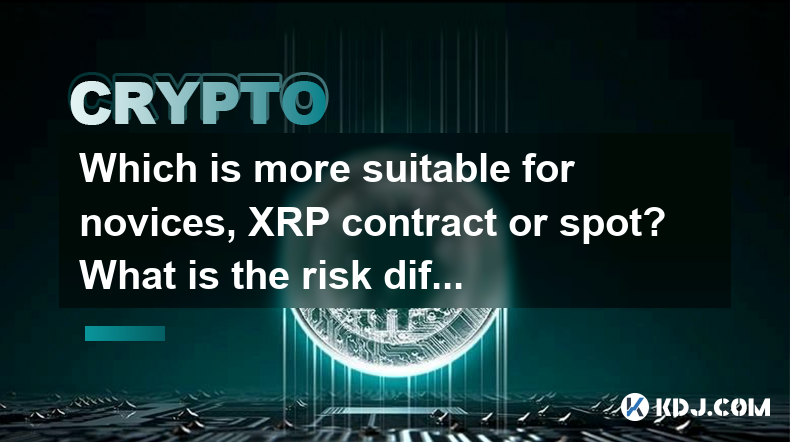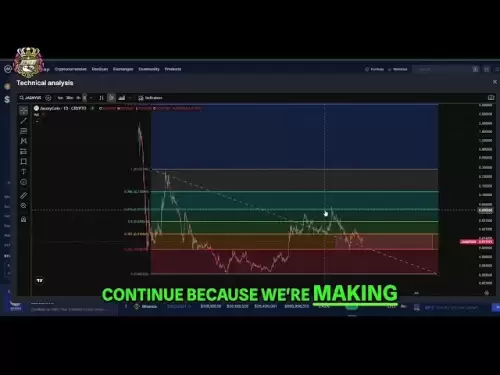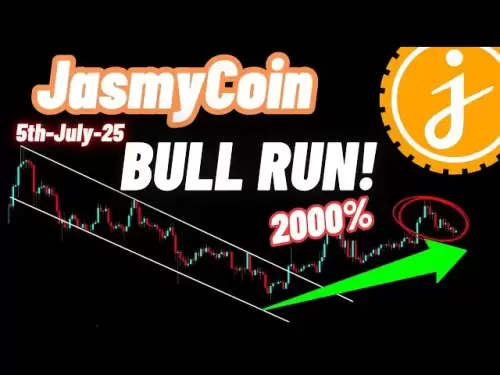-
 Bitcoin
Bitcoin $108,250.0992
0.11% -
 Ethereum
Ethereum $2,515.9404
0.03% -
 Tether USDt
Tether USDt $1.0003
0.00% -
 XRP
XRP $2.2166
-0.19% -
 BNB
BNB $656.5904
0.29% -
 Solana
Solana $147.4122
-0.58% -
 USDC
USDC $1.0000
-0.01% -
 TRON
TRON $0.2830
0.06% -
 Dogecoin
Dogecoin $0.1641
0.27% -
 Cardano
Cardano $0.5739
-0.19% -
 Hyperliquid
Hyperliquid $39.1463
-0.11% -
 Sui
Sui $2.8882
-0.02% -
 Bitcoin Cash
Bitcoin Cash $487.6428
0.31% -
 Chainlink
Chainlink $13.2097
0.07% -
 UNUS SED LEO
UNUS SED LEO $9.0308
0.10% -
 Avalanche
Avalanche $17.8608
0.13% -
 Stellar
Stellar $0.2379
-0.06% -
 Toncoin
Toncoin $2.7400
-0.39% -
 Shiba Inu
Shiba Inu $0.0...01144
-0.36% -
 Litecoin
Litecoin $87.5467
0.66% -
 Hedera
Hedera $0.1538
0.22% -
 Monero
Monero $315.5479
0.36% -
 Dai
Dai $1.0000
0.00% -
 Polkadot
Polkadot $3.3523
-0.71% -
 Ethena USDe
Ethena USDe $1.0003
0.01% -
 Bitget Token
Bitget Token $4.3960
-1.03% -
 Uniswap
Uniswap $7.2663
4.19% -
 Aave
Aave $272.8619
2.04% -
 Pepe
Pepe $0.0...09676
-0.18% -
 Pi
Pi $0.4586
-2.87%
Which is more suitable for novices, XRP contract or spot? What is the risk difference?
Novices should start with XRP spot trading for its simplicity and lower risk, but can explore contracts as they gain experience and understand the higher risks involved.
Apr 29, 2025 at 01:56 pm

When choosing between XRP contracts and XRP spot trading, novices often find themselves at a crossroads. The decision hinges on understanding the nature of each trading option, their inherent risks, and how they align with a beginner's trading goals and risk tolerance. XRP spot trading involves buying and selling XRP directly, where you own the actual cryptocurrency. On the other hand, XRP contracts, often referred to as futures or derivatives, allow traders to speculate on the future price of XRP without owning the underlying asset.
Understanding XRP Spot Trading
XRP spot trading is the most straightforward way to engage with the cryptocurrency. When you buy XRP on a spot market, you are purchasing the actual cryptocurrency, which you can then hold in a wallet or trade later. This type of trading is generally considered more suitable for novices because it involves fewer complexities and risks compared to contracts.
- Simplicity: Spot trading is easier to understand. You buy XRP at the current market price and sell it when you believe the price will be favorable.
- Ownership: You have full ownership of the XRP you purchase, which can be transferred to a personal wallet for long-term storage.
- Lower Risk: Since you are trading with the actual asset, the risk is more straightforward and primarily tied to the volatility of XRP's price.
Understanding XRP Contracts
XRP contracts are more complex financial instruments that allow traders to speculate on the future price of XRP. These contracts can be futures, options, or other derivatives, and they come with a set of rules and expiration dates. Contracts are often used by more experienced traders who are comfortable with higher levels of risk and leverage.
- Leverage: Contracts often allow for trading with leverage, meaning you can control a large position with a relatively small amount of capital. This can amplify both gains and losses.
- Complexity: Contracts involve understanding expiration dates, settlement processes, and sometimes complex trading strategies.
- Higher Risk: The use of leverage and the speculative nature of contracts can lead to significant losses, especially for those new to trading.
Risk Differences Between XRP Spot and Contracts
The risk profile between XRP spot trading and XRP contracts is markedly different, and understanding these differences is crucial for novices.
- Volatility Risk: Both spot and contract trading are subject to the volatility of XRP's price. However, contracts can exacerbate this risk due to leverage.
- Leverage Risk: Contracts often allow for trading with leverage, which can lead to substantial losses if the market moves against your position.
- Liquidity Risk: Contracts may have less liquidity than spot markets, which can make it harder to enter or exit positions at desired prices.
- Counterparty Risk: When trading contracts, there is a risk that the other party in the contract may default, although this is mitigated on reputable exchanges.
Suitability for Novices
For novices, XRP spot trading is generally more suitable due to its simplicity and lower risk profile. Here are some reasons why:
- Ease of Understanding: Spot trading is easier to grasp for those new to cryptocurrency trading.
- Lower Entry Barrier: You can start with a small amount of capital without the need for complex strategies.
- Reduced Risk of Loss: Without leverage, the potential for significant losses is lower compared to contracts.
However, if a novice is willing to invest time in learning and understands the risks involved, XRP contracts can offer opportunities for higher returns. It's essential for beginners to thoroughly educate themselves before venturing into contract trading.
Steps to Start XRP Spot Trading
If you decide that XRP spot trading is the right choice for you, here are the steps to get started:
- Choose a Reputable Exchange: Select a cryptocurrency exchange that supports XRP and is known for its security and user-friendliness. Examples include Binance, Coinbase, and Kraken.
- Create an Account: Sign up for an account on the chosen exchange. You will need to provide personal information and complete a verification process.
- Deposit Funds: Fund your account with a supported payment method, such as a bank transfer or credit card.
- Buy XRP: Navigate to the trading section of the exchange, select the XRP trading pair (e.g., XRP/USD), and place a buy order at the current market price or set a limit order at your desired price.
- Secure Your XRP: Consider transferring your XRP to a secure wallet if you plan to hold it long-term.
Steps to Start XRP Contract Trading
For those interested in XRP contracts, here are the steps to begin:
- Educate Yourself: Before trading contracts, take the time to understand how they work, including concepts like leverage, margin, and expiration dates.
- Select a Contract Trading Platform: Choose a platform that offers XRP contracts, such as Binance Futures or Bybit.
- Open an Account: Register for an account on the chosen platform and complete the necessary verification steps.
- Fund Your Account: Deposit funds into your account, ensuring you have enough to cover potential margin calls.
- Understand the Contract Specifications: Familiarize yourself with the specifics of the XRP contract you intend to trade, such as contract size, expiration date, and settlement method.
- Place a Trade: Decide whether you want to go long (buy) or short (sell) based on your market analysis. Set your position size and leverage, then place your order.
Managing Risks in XRP Trading
Regardless of whether you choose spot or contract trading, managing risks is crucial, especially for novices. Here are some tips:
- Start Small: Begin with small trades to gain experience without risking too much capital.
- Use Stop-Loss Orders: Implement stop-loss orders to limit potential losses on both spot and contract trades.
- Diversify: Don't put all your capital into a single trade or asset. Diversification can help mitigate risk.
- Stay Informed: Keep up with market news and developments that could impact XRP's price.
Frequently Asked Questions
Q: Can I switch from spot trading to contract trading as I gain experience?
A: Yes, as you become more comfortable with the market and gain more experience, you can transition from spot trading to contract trading. It's important to continue educating yourself and start with small positions when you make the switch.
Q: Are there any tools or resources that can help novices with XRP trading?
A: Yes, there are numerous resources available. Many exchanges offer educational materials and demo accounts where you can practice trading without risking real money. Additionally, there are online courses, forums, and trading communities where you can learn from more experienced traders.
Q: How important is it to choose a reputable exchange for XRP trading?
A: Choosing a reputable exchange is crucial. A reputable exchange will have robust security measures in place to protect your funds, offer good customer support, and provide a user-friendly trading interface. It's worth spending time researching and selecting an exchange that meets these criteria.
Q: What should I do if I experience significant losses in XRP trading?
A: If you experience significant losses, take a step back and assess your trading strategy. It's important not to let emotions drive your decisions. Consider reducing your position sizes, reviewing your risk management practices, and seeking advice from more experienced traders or financial advisors.
Disclaimer:info@kdj.com
The information provided is not trading advice. kdj.com does not assume any responsibility for any investments made based on the information provided in this article. Cryptocurrencies are highly volatile and it is highly recommended that you invest with caution after thorough research!
If you believe that the content used on this website infringes your copyright, please contact us immediately (info@kdj.com) and we will delete it promptly.
- Ruvi AI: The Avalanche of Returns Crashing into the Crypto Scene
- 2025-07-06 08:30:13
- XRP's Wild Ride: Is a Parabolic Bull Run on the Horizon?
- 2025-07-06 08:30:13
- Bitcoin, Suspicion, and Billions: Decoding the Crypto Whale Moves
- 2025-07-06 08:50:13
- Bitcoin's Price Discovery Quest: Rally Structure Under the Microscope
- 2025-07-06 08:50:13
- Chainlink's Bullish Blueprint: Price Prediction and the Harmonic Pattern
- 2025-07-06 06:30:12
- Ruvi AI: The Audited Token Promising ROI That'll Make Your Head Spin
- 2025-07-06 06:30:12
Related knowledge

How to customize USDT TRC20 mining fees? Flexible adjustment tutorial
Jun 13,2025 at 01:42am
Understanding USDT TRC20 Mining FeesMining fees on the TRON (TRC20) network are essential for processing transactions. Unlike Bitcoin or Ethereum, where miners directly validate transactions, TRON uses a delegated proof-of-stake (DPoS) mechanism. However, users still need to pay bandwidth and energy fees, which are collectively referred to as 'mining fe...

USDT TRC20 transaction is stuck? Solution summary
Jun 14,2025 at 11:15pm
Understanding USDT TRC20 TransactionsWhen users mention that a USDT TRC20 transaction is stuck, they typically refer to a situation where the transfer of Tether (USDT) on the TRON blockchain has not been confirmed for an extended period. This issue may arise due to various reasons such as network congestion, insufficient transaction fees, or wallet-rela...

How to cancel USDT TRC20 unconfirmed transactions? Operation guide
Jun 13,2025 at 11:01pm
Understanding USDT TRC20 Unconfirmed TransactionsWhen dealing with USDT TRC20 transactions, it’s crucial to understand what an unconfirmed transaction means. An unconfirmed transaction is one that has been broadcasted to the blockchain network but hasn’t yet been included in a block. This typically occurs due to low transaction fees or network congestio...

How to check USDT TRC20 balance? Introduction to multiple query methods
Jun 21,2025 at 02:42am
Understanding USDT TRC20 and Its ImportanceUSDT (Tether) is one of the most widely used stablecoins in the cryptocurrency market. It exists on multiple blockchain networks, including TRC20, which operates on the Tron (TRX) network. Checking your USDT TRC20 balance accurately is crucial for users who hold or transact with this asset. Whether you're sendi...

What to do if USDT TRC20 transfers are congested? Speed up trading skills
Jun 13,2025 at 09:56am
Understanding USDT TRC20 Transfer CongestionWhen transferring USDT TRC20, users may occasionally experience delays or congestion. This typically occurs due to network overload on the TRON blockchain, which hosts the TRC20 version of Tether. Unlike the ERC20 variant (which runs on Ethereum), TRC20 transactions are generally faster and cheaper, but during...

The relationship between USDT TRC20 and TRON chain: technical background analysis
Jun 12,2025 at 01:28pm
What is USDT TRC20?USDT TRC20 refers to the Tether (USDT) token issued on the TRON blockchain using the TRC-20 standard. Unlike the more commonly known ERC-20 version of USDT (which runs on Ethereum), the TRC-20 variant leverages the TRON network's infrastructure for faster and cheaper transactions. The emergence of this version came as part of Tether’s...

How to customize USDT TRC20 mining fees? Flexible adjustment tutorial
Jun 13,2025 at 01:42am
Understanding USDT TRC20 Mining FeesMining fees on the TRON (TRC20) network are essential for processing transactions. Unlike Bitcoin or Ethereum, where miners directly validate transactions, TRON uses a delegated proof-of-stake (DPoS) mechanism. However, users still need to pay bandwidth and energy fees, which are collectively referred to as 'mining fe...

USDT TRC20 transaction is stuck? Solution summary
Jun 14,2025 at 11:15pm
Understanding USDT TRC20 TransactionsWhen users mention that a USDT TRC20 transaction is stuck, they typically refer to a situation where the transfer of Tether (USDT) on the TRON blockchain has not been confirmed for an extended period. This issue may arise due to various reasons such as network congestion, insufficient transaction fees, or wallet-rela...

How to cancel USDT TRC20 unconfirmed transactions? Operation guide
Jun 13,2025 at 11:01pm
Understanding USDT TRC20 Unconfirmed TransactionsWhen dealing with USDT TRC20 transactions, it’s crucial to understand what an unconfirmed transaction means. An unconfirmed transaction is one that has been broadcasted to the blockchain network but hasn’t yet been included in a block. This typically occurs due to low transaction fees or network congestio...

How to check USDT TRC20 balance? Introduction to multiple query methods
Jun 21,2025 at 02:42am
Understanding USDT TRC20 and Its ImportanceUSDT (Tether) is one of the most widely used stablecoins in the cryptocurrency market. It exists on multiple blockchain networks, including TRC20, which operates on the Tron (TRX) network. Checking your USDT TRC20 balance accurately is crucial for users who hold or transact with this asset. Whether you're sendi...

What to do if USDT TRC20 transfers are congested? Speed up trading skills
Jun 13,2025 at 09:56am
Understanding USDT TRC20 Transfer CongestionWhen transferring USDT TRC20, users may occasionally experience delays or congestion. This typically occurs due to network overload on the TRON blockchain, which hosts the TRC20 version of Tether. Unlike the ERC20 variant (which runs on Ethereum), TRC20 transactions are generally faster and cheaper, but during...

The relationship between USDT TRC20 and TRON chain: technical background analysis
Jun 12,2025 at 01:28pm
What is USDT TRC20?USDT TRC20 refers to the Tether (USDT) token issued on the TRON blockchain using the TRC-20 standard. Unlike the more commonly known ERC-20 version of USDT (which runs on Ethereum), the TRC-20 variant leverages the TRON network's infrastructure for faster and cheaper transactions. The emergence of this version came as part of Tether’s...
See all articles

























































































